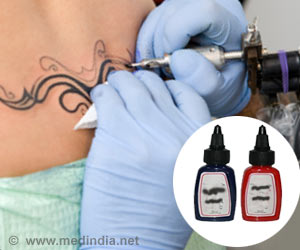We have often heard that tattoos can lead to skin cancer, but is it a myth? Read more to unravel the truth.
- One-fourth of Americans between the ages of 18 and 50 years old have tattoos
- There is a common myth about tattoos: that they can cause cancer
- The mystery surrounding this myth has been solved, tattoos are not linked to cancer as per studies
What Should I look for in a Tattoo?
Doing your homework before getting a tattoo is the best thing you can do. It appears straightforward to Google what you want, locate the nearest tattoo studio, and arrange an appointment. But did you evaluate if the tattoo shop was clean? Is their equipment sterile, and how do you care for your new ink after your session to avoid infection? Here are a few precautions to take while determining where to get a tattoo: Do extensive research on a tattoo studio or artist: If you find a tattoo artist whose designs you like, ensure that both they and the studio where they tattoo are licensed. Check with your city or state health agency for further information on local licensing and restrictions, as these can vary by state. Examine the tattoo artist's web reviews to learn more about other people's interactions with them.Choose your tattoo location:
This is entirely up to you; however, you may want to keep to a less painful portion of the body, such as the forearm. Avoid areas like the hands and feet, since they fade faster and require more touch-ups. Additionally, tattoos can get distorted with weight gain, so keep that in mind if you get one in an area prone to fat buildup.
Ascertain that the place has been prepared: The area of the body chosen for your tattoo should be cleaned with antiseptic to prevent microorganisms from entering the tattoo from the skin surface.
Understand the safety precautions: Examine whether the artist uses gloves and properly disinfected equipment. Before the procedure begins, ensure that the tattoo artist removes the needle and tubing from the sealed containers.
The CDC also advises tattoo artists to always use sterile ink and to never use inks that are not intended for tattooing, such as drawing ink or even printer ink, or to clean equipment with non-sterile water.
How Should I Care for my Tattoo?
It is just as vital to take care of your tattoo as it is to do your research. For good tattoo aftercare, use the guidelines and supplies recommended.After Receiving your Tattoo
After receiving your tattoo, it should be covered in plastic and left on for a few days, depending on the size. Remove the plastic on days two or three, but consult with your artist for specifics.
Just use Clean Hands to Touch your Tattoo
Clean the area once a day with warm water and a mild cleaner. Just use antibacterial soap to wash and pat dry your tattoo.
To keep the region moist, use tattoo artist-recommended ointments (shea butter, lotions, etc).
- Avoid overmedicating the region
- Let it breathe; do not pick or scratch it
- Use sunscreen and avoid prolonged sun exposure. Sun exposure can fade the colors of your tattoo as well as burn and scar your skin
- Avoid swimming and using hot tubs
- Keep your skin hydrated and use mild lotions
- Understand the dangers
Can it, however, induce other disorders such as cancer? While additional research is needed, studies indicate that certain tattoo ink sold in the United States may contain cancer-causing substances. There is also fear that tattoo inks may impair doctors' ability to detect skin malignancies within tattoos.
According to the Current Oncology Journal, black and red ink was linked to a greater risk of death from skin malignancies such as:
Melanoma: The most lethal form of skin cancer, it usually originates from a mole or shows as a new, dark patch on the skin.
Basal cell carcinomas are the most prevalent type of skin cancer, which often affects people with pale skin, although people of color can also acquire this type of skin cancer. Dermatofibrosarcoma protuberans is an uncommon soft tissue tumor that grows slowly and is detected through a skin biopsy. The exact cause of dermatofibrosarcoma protuberans is unknown.
Tattoo ink's color might also make it difficult for doctors to diagnose skin cancer. Cutaneous malignancies, or cancers that begin in cells on the skin's outer layer, might manifest as firm red lumps, red patches, or an open sore. Because tattoos make it more difficult to spot changes or anomalies in a person's skin or moles, it is critical to undergo regular skin exams from your doctor.
Why Should I have my Skin Examined?
In the United States, skin cancer is the most frequent type of cancer. Individuals with and without tattoos should perform frequent skin checks and notify their doctor if they see any new lesions or suspicious changes to their skin or moles. Those at higher risk should have annual skin cancer screenings.Melanoma
Melanoma in the family (two or more relatives)
Multiple Moles
The presence of several moles and learn the "ABCs" of moles and spot-check your moles between routine skin checks.
Skin that Burns or Freckles Readily
Those with blue or green eyes and blonde or red hair; Individuals with these characteristics naturally have less melanin pigment, as well as less UV protection, and are more exposed to the sun.
Senior Citizens
Aging and sun exposure are the two most important risk factors for getting skin cancer. Sun protection can help keep your skin healthy and reduce your chances of developing skin cancer. The best daily practices for preventing skin cancer are to wear sun-protective clothes and sunscreen.
Tattoos are cool, but be aware of the risks and the best way to get them.
Source-Medindia










